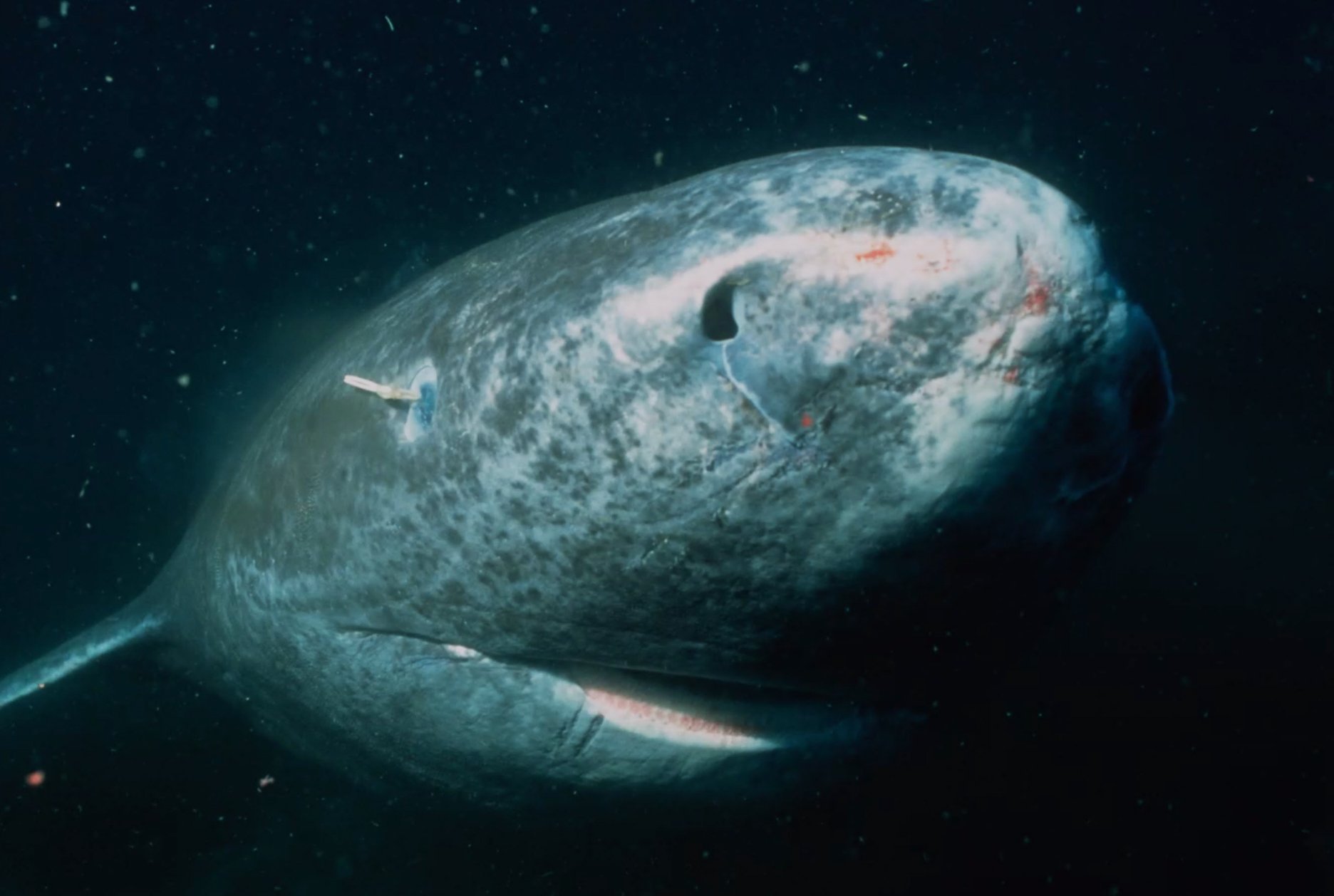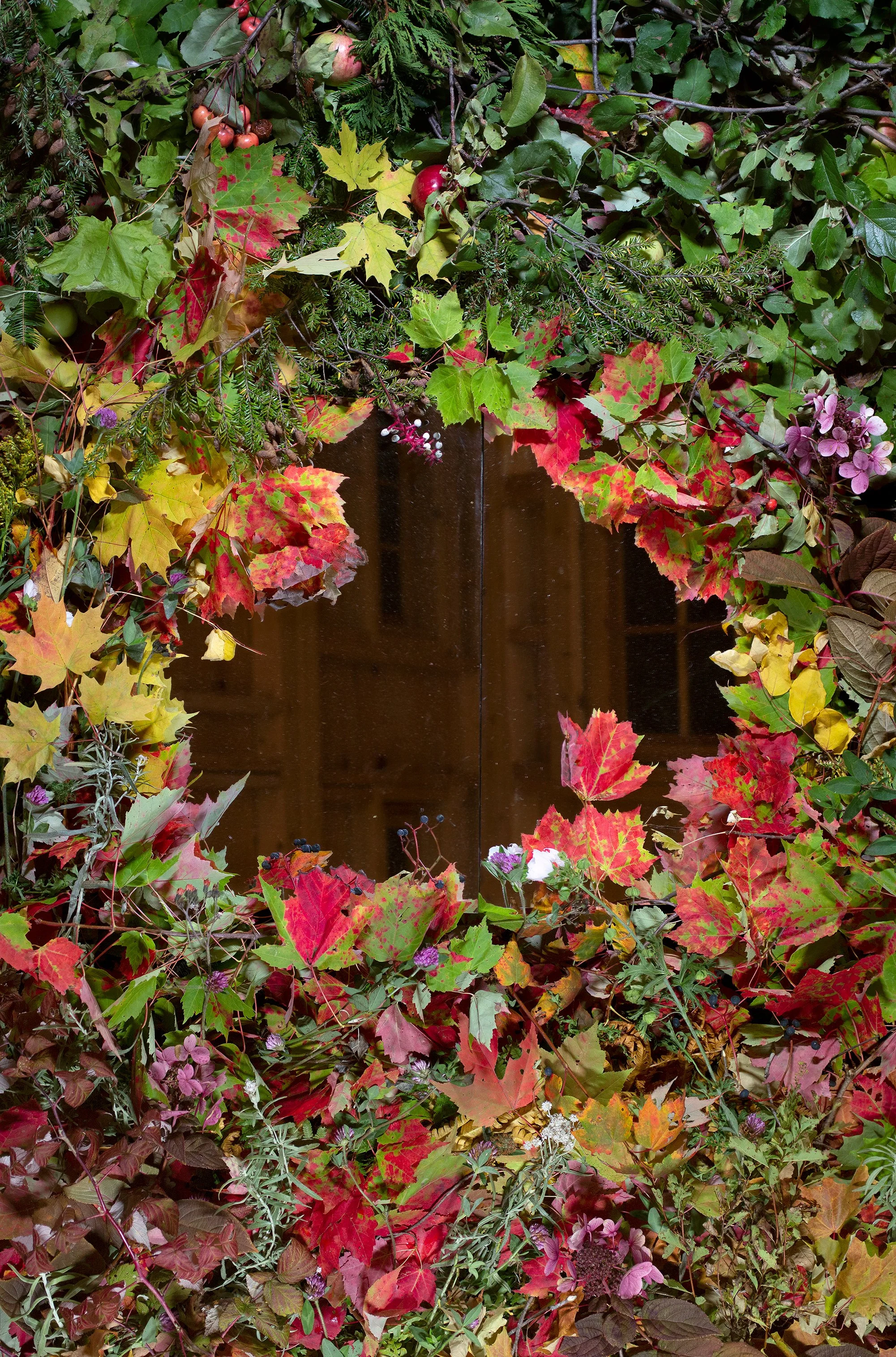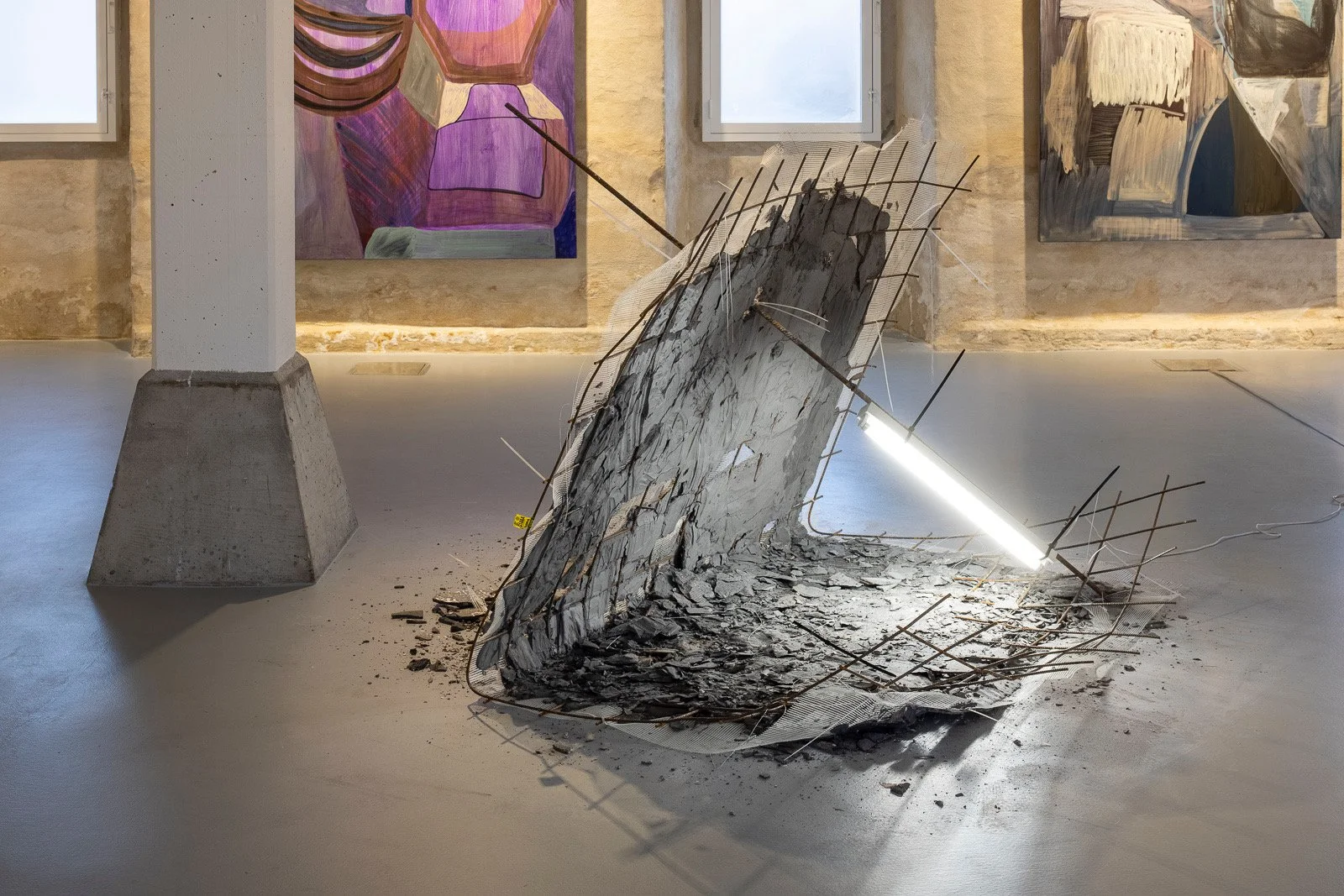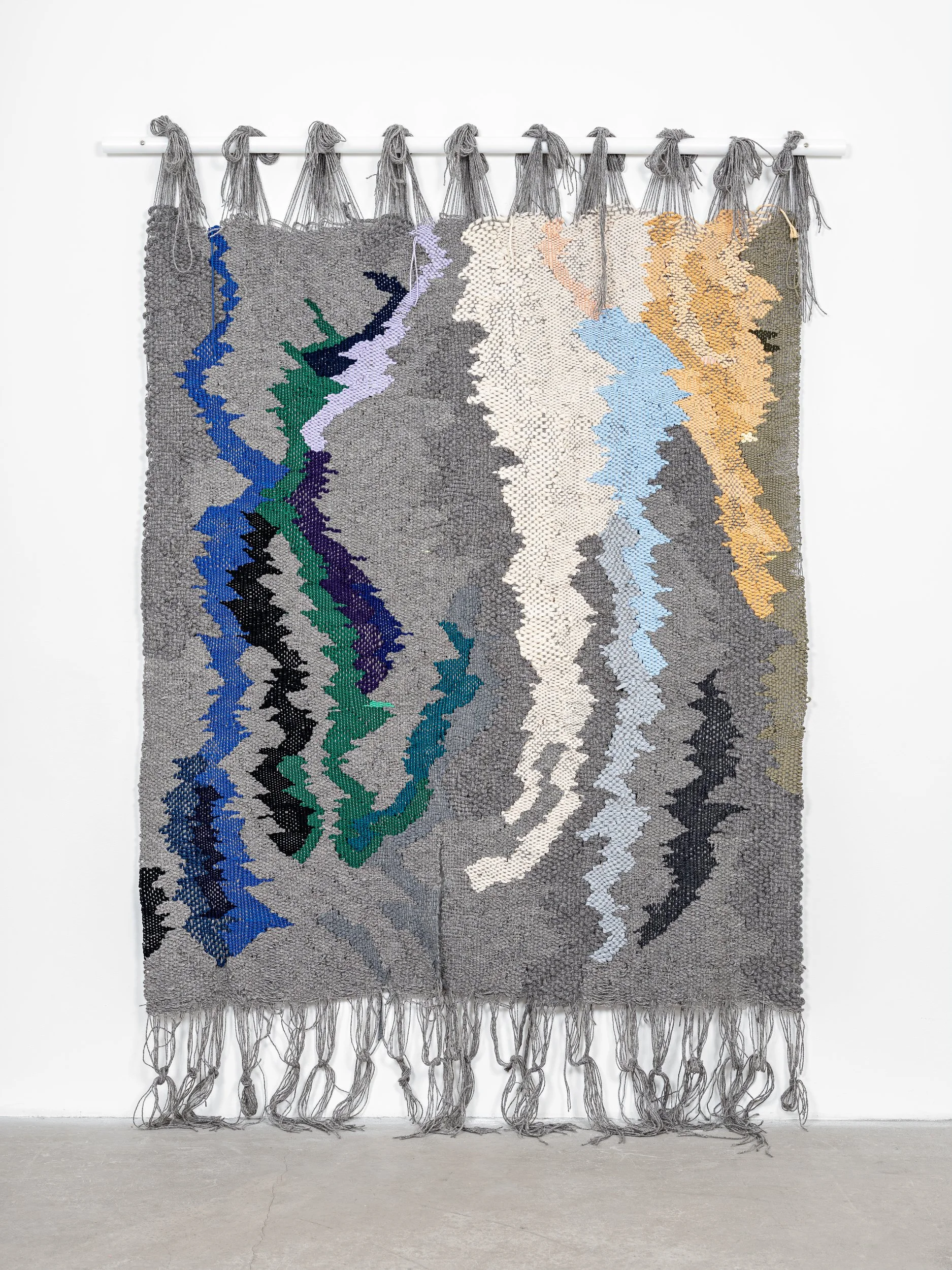Joshua Reiman

In the new film Time Washes Over Us, Portland-based artist Joshua Reiman considers mortality through marine life and poetic and observational storytelling.

Joshua Reiman (United States, born 1972), Time Washes Over Us, 2022, still from single-channel video, 21:19 minutes. Somniosus Microcephalus, Nick Caloyianis Productions Inc. & Joshua Reiman. Courtesy of the artist. © Joshua Reiman
Years in the making, he worked with divers and scientists to identify a few of the longest-living animal species in the oceans of the world. Mortality as a concept is expressed through an extended voiceover— narrated by his five-year-old son Ole—that was constructed after each encounter with oceanic animals that are estimated to live from 250 to 400+ years. The film focuses on the Icelandic clam (Arctica islandica) in Eyjafjörður, in Northern Iceland; the red sea urchin (Mesocentrotus franciscanus) in Vancouver Island, British Columbia; and the Greenland shark (Somniosus microcephalus) in Baffin Island, Canada.
“Through encountering these animals in their natural habitat, it helps to bring into consciousness the fragility of life, while quietly interlacing philosophy and historical contexts with questions about mortality as it relates to the human condition.”
Joshua Reiman, (United States, born 1972), Time Washes Over Us, (detail), 2022. Single-channel video, approximately 21 minutes 18 seconds. Musical score consists of contributions and collaborations with Norihito Suda (Japan), Jóhann Jóhannsson (Iceland), Patrick Carey (Portland, ME), ANOHNI (New York, NY), and Ole B Fossdalur Reiman (Portland, ME). Courtesy of the artist. © Joshua Reiman
Explore more artworks from North Atlantic Triennial
In his photographs, Icelandic photographer Ragnar Axelsson, also known as RAX, uses soft focus, bright light and absolute black and white tones to reflect on the present and show us the condition the world is in. RAX has worked in some of the northernmost regions of the world, in Iceland, Greenland, and Siberia, documenting people, animals, and landscapes.
Jordan Bennett lives and works on his ancestral territory of Mi’kma’ki in Terence Bay, Nova Scotia. He explores land, language, and familial histories in his art to challenge colonial perceptions of Indigenous histories.
Jason Brown, also known as Firefly, is a Native American of the Penobscot Nation, with Swedish roots, born and raised in ancient Wabanaki territory. Deeply influenced by the traditions of his people, Firefly performs traditional hand drum, Shaker, and vocal songs as well as cutting edge musical compositions rooted in his ancestral traditions.
Maine-based artist Christopher Carroll is concerned about plant autonomy, or the capacity of plants to assess, perceive, and act on their environment, and in doing so, generate the conditions for their own flourishing.
Jóhan Martin Christiansen is primarily a sculptor and installation artist who splits his time between the Faroe Islands and Copenhagen, Denmark. He draws inspiration from both natural and built environments. His work also engages with queer theory to explore the varieties and depths of sexual identity.
Portland-based artist Lauren Fensterstock creates detailed, labor- intensive, large-scale installations that draw from the decorative arts, including paper quilling and mosaic. She is preoccupied with our relationship to nature and humankind’s attempt to control it.
The artistic duo Gideonsson/Londré, who live and work in the village of Kallrör, Sweden, examine the relationship with time and body through performances, installations, and interventions.
Greenland’s complicated history informs the work of Inuk/Kalaaleq artist Julie Edel Hardenberg, who lives and works in Nuuk, the small capital city located on the southwest coast. She explores identity, culture, and language from a postcolonial perspective to address mental colonization, cultural assimilation, and socialization structures.
Reggie Burrows Hodges explores the power of storytelling and visual metaphor in his figurative paintings that address themes of identity, memory, community, and truth.
Norwegian weaver Ann Cathrin November Høibo draws upon the pared- down aesthetic of her Nordic heritage to recraft landscapes in large-scale handwoven textiles.
Joan Jonas is firmly placed historically as one of the first and most important figures of performance and video art. Since the 1970s, Jonas has split her time between New York and Nova Scotia, Canada. Her artistic practice encompasses video, performance, installation, sound, text, and drawing.
Artist and poet Jessie Kleemann is originally from Upernavik in northern Greenland; today, she lives and works in Copenhagen, Denmark. Trained as a lithographic artist, she works with traditional and contemporary Inuit themes, video, music, poetry, and dance.
In his interdisciplinary practice, Portland-based artist Justin Levesque considers the materiality and tradition of photography in relation to information exchange and mediated geographies of the High North.
Icelandic multidisciplinary artist Anna Líndal explores geography, mapping, and cartography informed by scientific expeditions that track, record, and visualize the changing landscape.
Meagan Musseau works from her contemporary perspective as a L’nu woman living on Ktaqmkuk [Newfoundland]. In her practice, she explores the history of interterritorial relationships between Mi’kmaq and Beothuk nations to enact Indigenous survivance, which is a way of life that nourishes Indigenous ways of knowing, and bring to light the immemorial history of the importance of land to Indigenous peoples.
Mattias Olofsson lives and works in Umeå and Storbrännan, Sweden. He explores questions of identity in relation to inclusion and exclusion, inspired by masks and confusion, namely situations where the identity arises from being awarded or taking its space in a larger structure.
Born in Norway and of dual Norwegian and Nigerian heritage, artist Frida Orupabo is also a trained sociologist who mines images from archives, the media, and her personal life to create new readings and meanings.
Bita Razavi was born in Tehran and currently lives and works between Helsinki, Finland and countryside Estonia. Their practice is centered around observations and reflections on a variety of everyday situations, examining the inner workings of social systems in relation to the political structures of various countries and national events of historic pro- portions.
In the new film Time Washes Over Us, Portland-based Joshua Reiman considers mortality through marine life and poetic and observational storytelling.
Using the ephemeral, yet tactile, qualities of sound to architectural interventions, the works by Finnish artist Hans Rosenström are carefully produced in relation to the sites in which they are experienced.
Sámi artist, activist, and writer Máret Ánne Sara artwork is a protest and symbol of the Norwegian government’s forced slaughter of reindeer belonging to Indigenous Sámi herders in Finnmark County.
Icelandic artist Magnús Sigurðarson’s sculptures read as tongue-in-cheek memorials to the cod fish, a species that is closely connected to the history and living inhabitants all around the North Atlantic.
Examination of Swedish colonization, the government-sanctioned assaults and a history of denial have been a central aspect of artist Katarina Pirak Sikku’s work.
Norwegian artist Andreas Siqueland’s paintings are primarily landscapes in oil, ink and watercolor on board, paper and canvas. His works play on the active relationship between the conditions in which a painting is made and the ‘what’ it depicts.
The artist collective Snæbjörnsdóttir / Wilson investigates the complications of human and nonhuman relations through the study of polar bear arrivals in Iceland.
Maine-and-New York based artist Peter Soriano began his career making resin sculptures before shifting to large-scale, site-specific wall drawings made of acrylic and spray paint.
Anders Sunna is a Northern Sámi artist from a reindeer-herding family in Kieksiäisvaara, in the Swedish part of Sápmi. Sunna’s politically charged artworks narrate the history of the violence and oppression against the Sámi people, specifically addressing his family’s five-decade-long struggle for their right and acknowledgement to be forest reindeer herders.
The Danish artist collective SUPERFLEX reimagines our environments and embraces the future of vertical fish migration by designing new structures.
Atlantic Canadian artist D’Arcy Wilson’s work laments past and ongoing colonial interaction with the natural world from her perspective as a descendent of European settlers in Atlantic Canada.
In her paintings, Arngunnur Ýr interprets Icelandic landscape from a unique perspective of a nature guide.






























